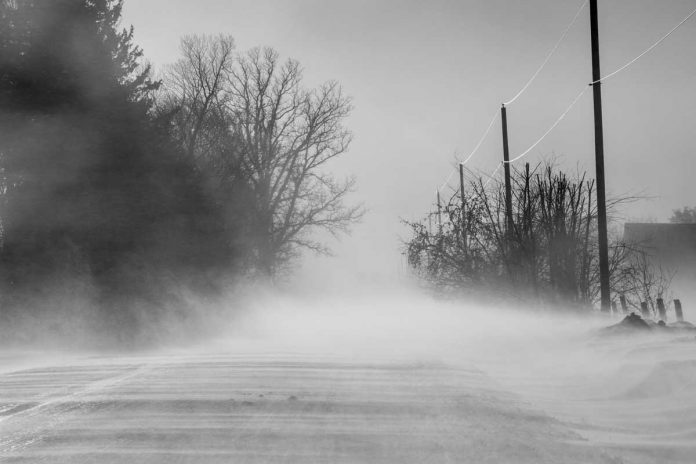MANITOWANING – Debajehmujig Storytellers is hosting a striking art exhibit by Island artist Lauren Satok, one that challenges settler perspectives of ‘vacant land’ by juxtaposing traditional landscapes paintings with Indigenous-focused narratives.
“Landscape painting has been used as a colonial source of power, at least in terms of historical Canadian paintings,” said Ms. Satok, referring to the Group of Seven as an example of artists whose work was revered for its striking depictions of the vast emptiness of the Canadian wilderness—not taking into account the numerous peoples who have lived in those settings since time immemorial.
This is not to say that Ms. Satok has presented her works in an Indigenous-history-only mindset; rather, she said it is important to showcase a shared history narrative in which settler realities intersect with Indigenous peoples.
“In order to support any sort of Indigenous self-agency through art, the colonial story has to be told with the First Nations in Canada,” she said.
Ms. Satok does not have Indigenous roots and is of Jewish descent. She said her own people’s long history of oppression has made her more sensitive to the issues faced by other populations.
She was careful to state that she does not want to, nor can she speak for other people, especially the First Nations histories which she discusses, but that this artwork is a way of examining a tense subject in Canada.
“Being white, we cannot fully identify with First Nations histories, but we can have a deep sensitivity. That’s what I’m asking of people through my art,” she said.
An initial glance at Ms. Satok’s artwork will draw the eye to many layers of colour, detail and contrasting elements within the paintings. She uses watercolour crayon and ink in many of her works, as well as oil paints in others. Some photographs and stencil forms are overlaid with maps and vibrant colours.
“The idea of that is to compare and contrast the different styles of landscape-type work,” she said. “That’s the point of the exhibition, to bring awareness to the layered histories of settler and Indigenous culture.
This exhibition, which is Ms. Satok’s largest-ever show of her work, is the culmination of a two-year Ontario Arts Council grant for a project called ‘Ghost Lands: Behind the Mask of Reconciliation.’
Seeing her art displayed in such a prominent format, with 39 of her works covering the walls of Debaj, has been a major source of inspiration for Ms. Satok.
“This is a life-changer for me. I’ve never been able to see all my work in such a big space. I’m grateful to Debaj,” she said.
Ms. Satok has taken a different viewpoint for serious issues as a way of highlighting contrasts.
“I’m touching on slightly humorous ways of looking at it, like using weeds as a metaphor for Indigenous peoples because they were often construed as unimportant and annoyances in the way of settlement,” said Ms. Satok.
Once piece that fits the narrative well is a photo of the Indian Agent’s house in Manitowaning layered behind a small shack in Sheguiandah First Nation, with weeds spread throughout the frame.
A unique element of her artwork is the frequent use of maps, tools she described as a “political power play” because they have been used to establish ownership and control over a territory throughout history.
Ms. Satok has been a professional artist since 2006. She previously worked as a tree planter, as a wilderness canoe guide, with at-risk youth and studied environmental science at the University of Guelph. Ms. Satok said she was having difficulty with the mindset of the Toronto art scene and sought alternative venues in which to work and display her art, which led her to Manitoulin Island for the first time in 2008. She relocated to Manitowaning three years ago.
The paintings in this exhibition date from 2012 to present. She said she would like to expand this show to art galleries in Sudbury, Mississauga and Thunder Bay. She added that she has greatly enjoyed this style and will be doing more work on similar pieces in the future.
“I’m going to do way more work on these projects. I know where it’s going now,” she said. “I want to take the themes running through these images and expand on them.”
Ms. Satok’s works are on display at Debajehmujig Storytellers in Manitowaning until April 30.




